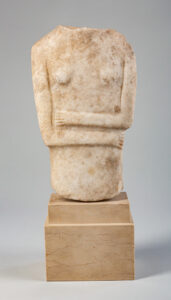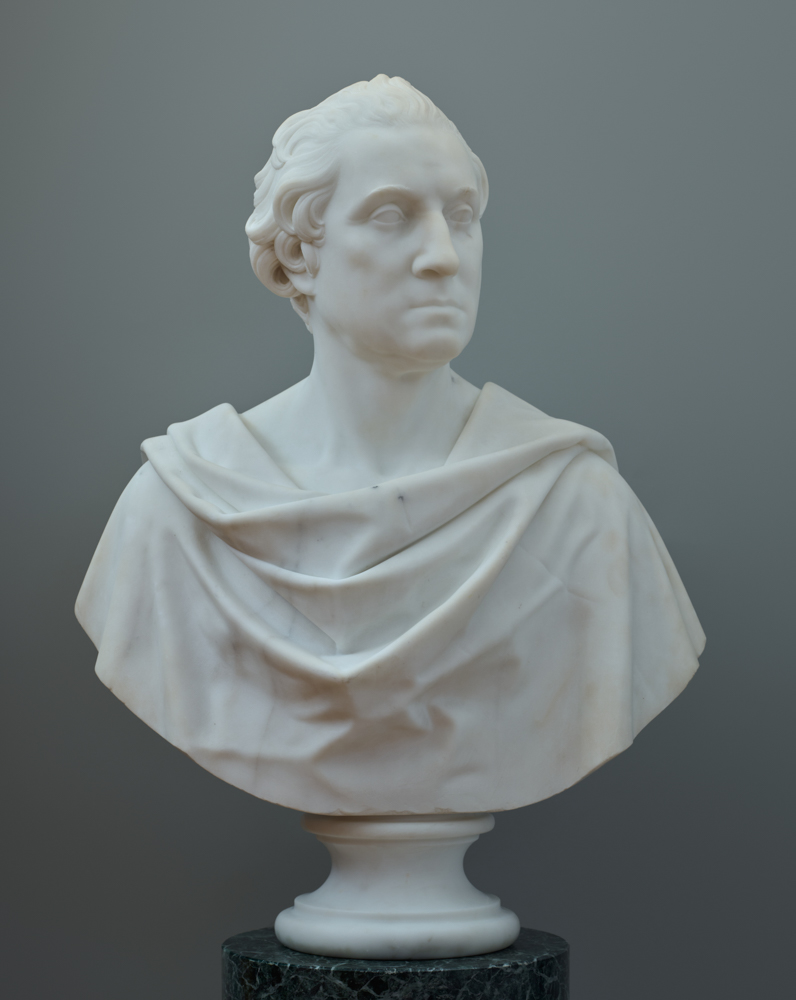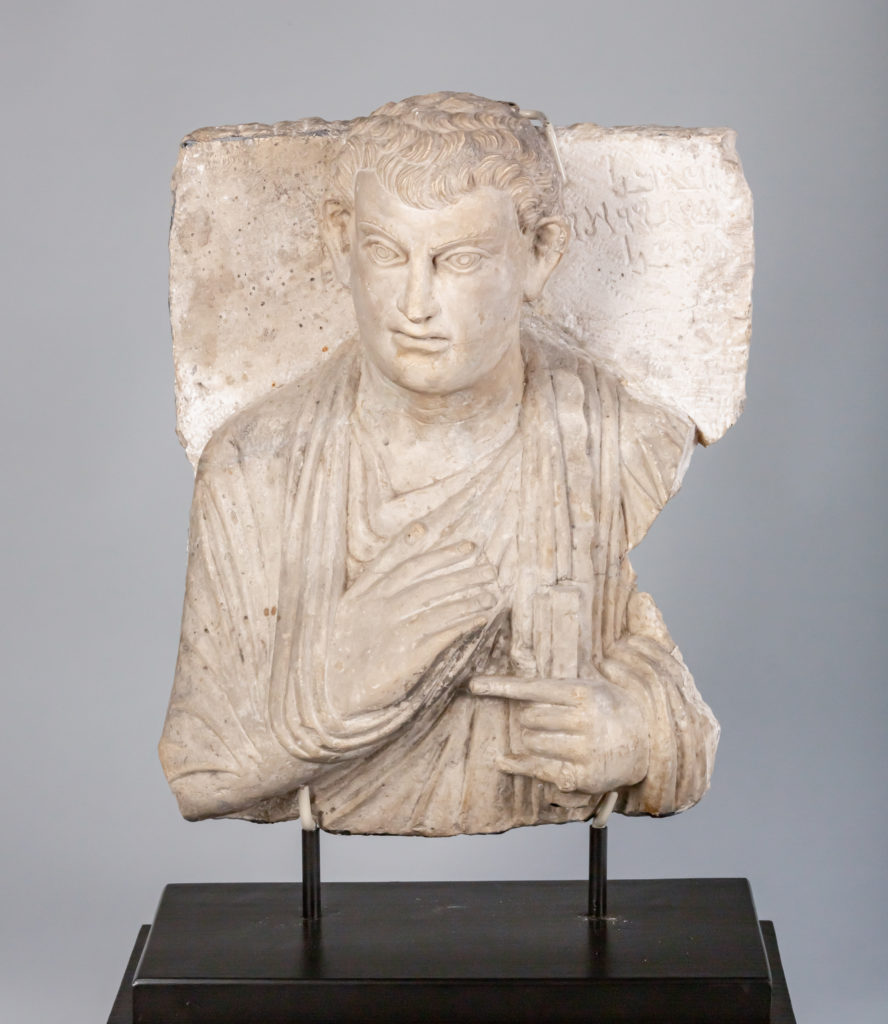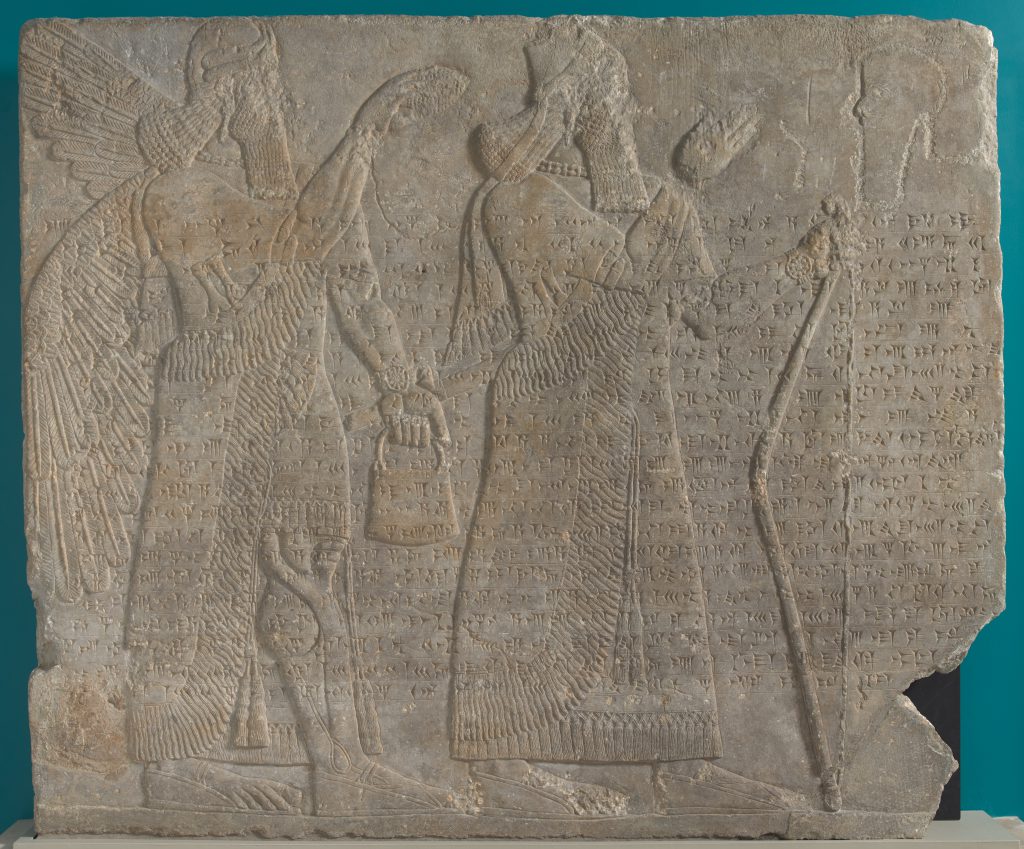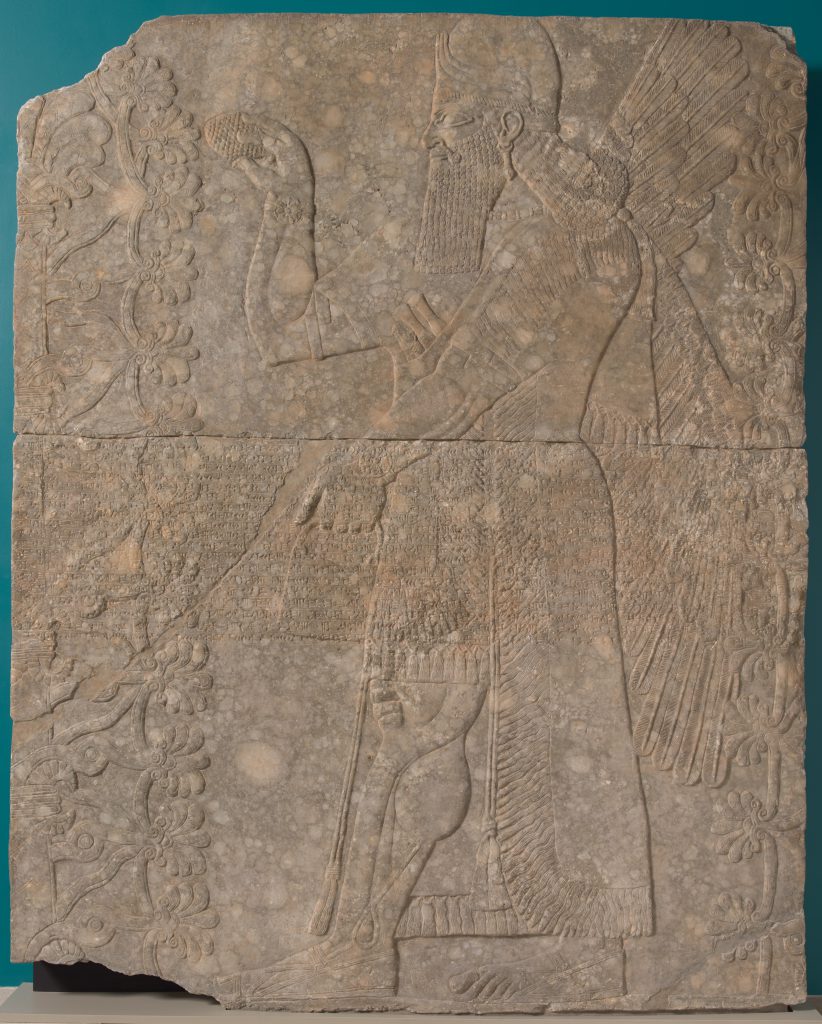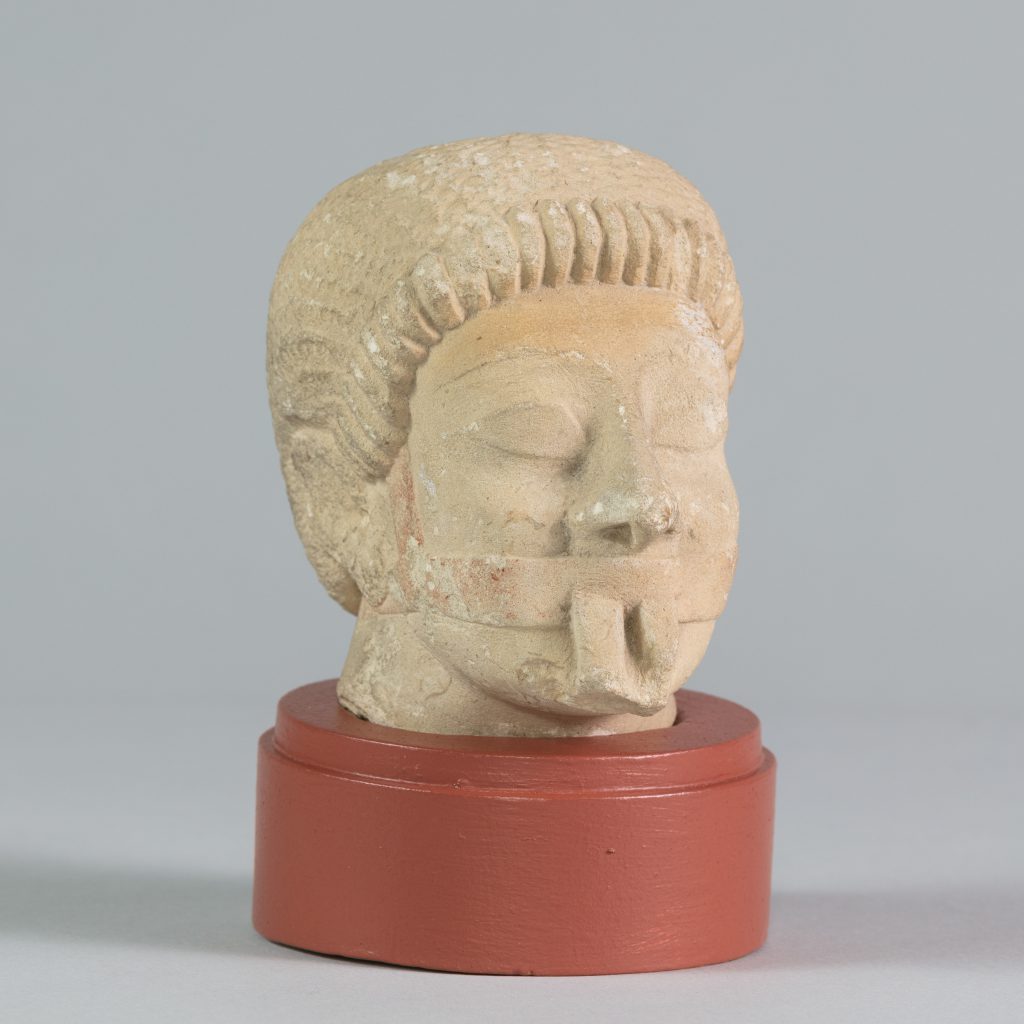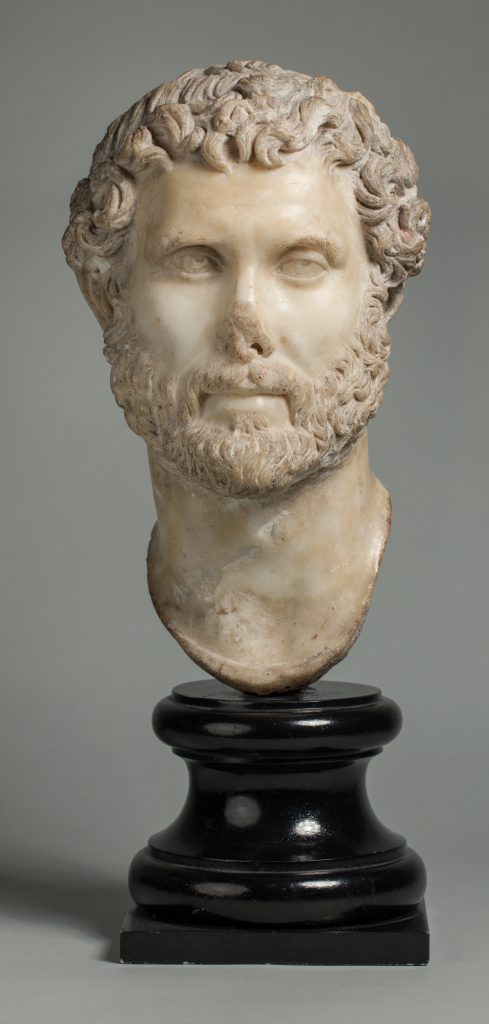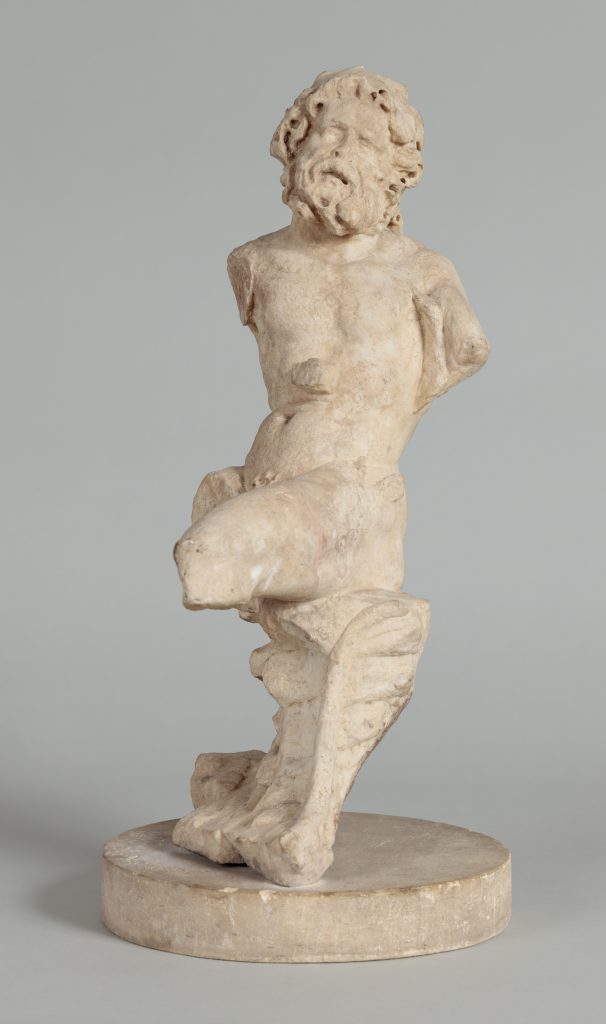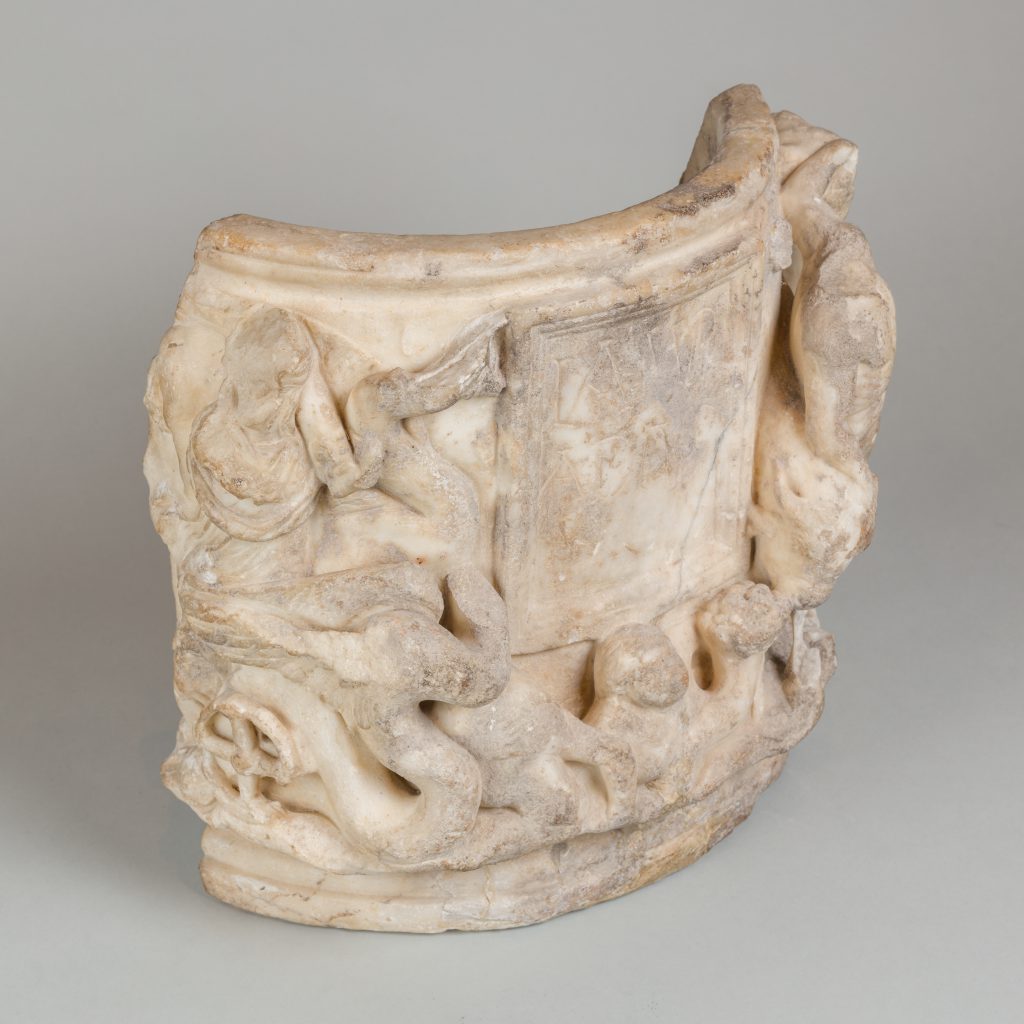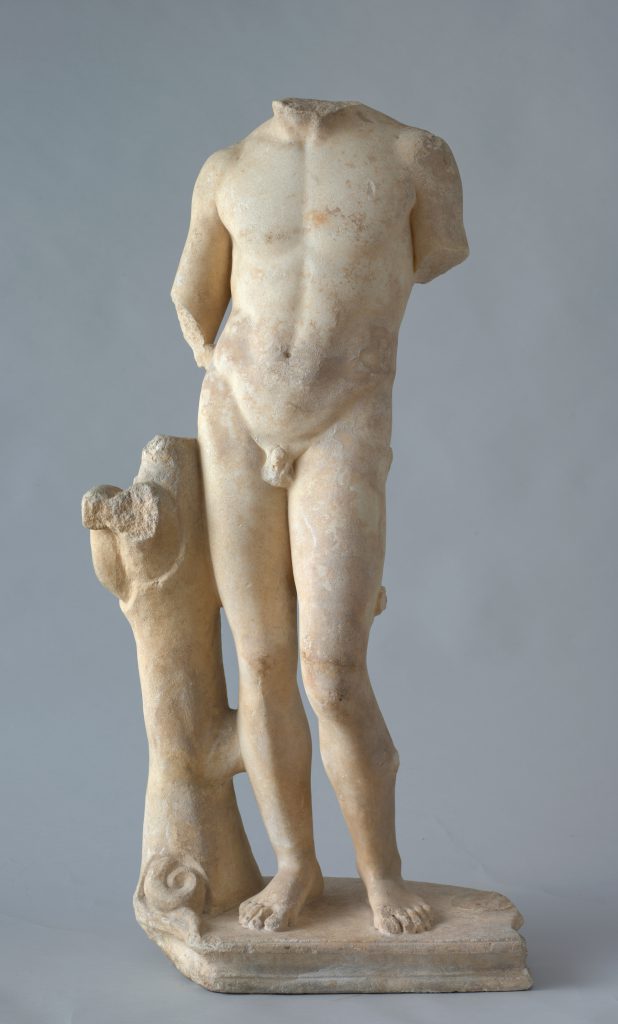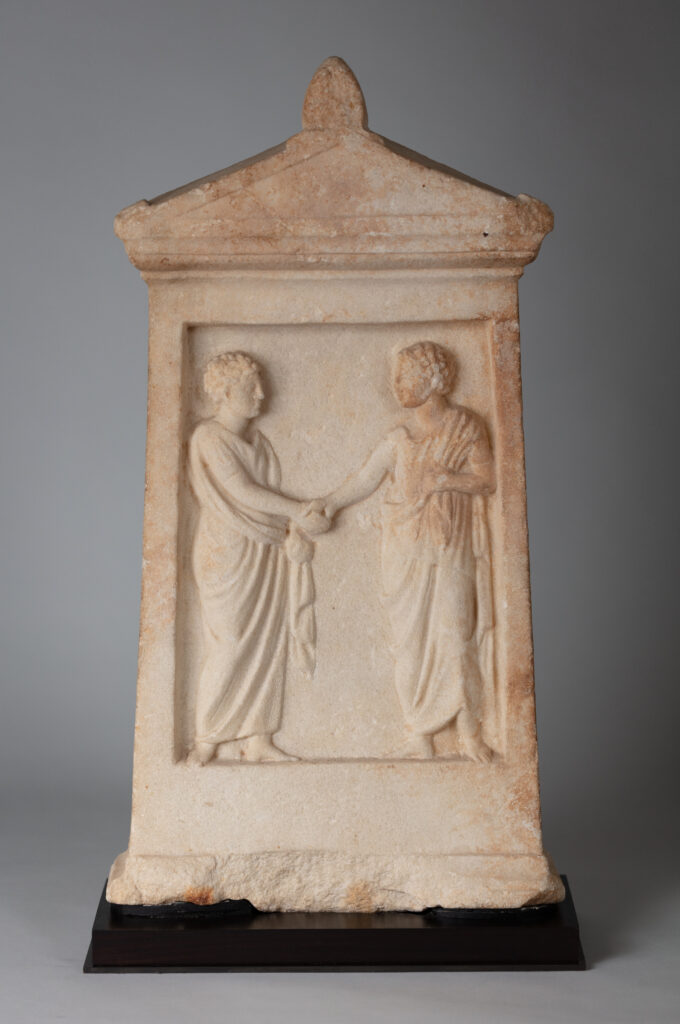
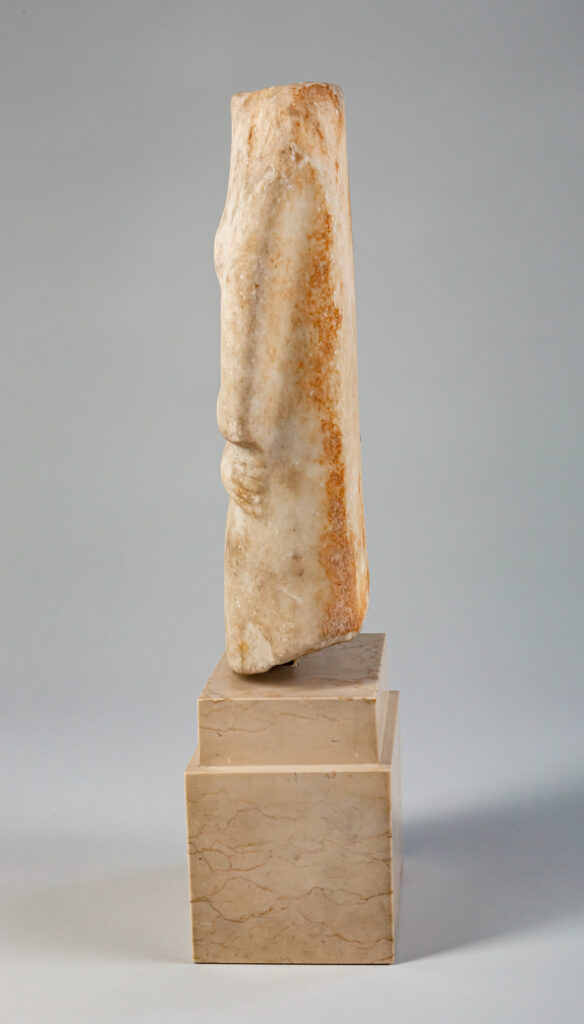


Bequest of Jere Abbott, 1920
1982.15.4Cycladic sculptors of the early Bronze Age produced many thousands of marble figures depicting the human form in schematized fashion with flat planes and simple geometry. The Bowdoin figure is an example of the Spedos type, the most common style among Cycladic figures. Originally considered “primitive” examples of ancient art when they were discovered in the nineteenth century, these simple figures with elegant curves became popular among collectors in the twentieth century for their resonance with modern sculpture, particularly the work of sculptors like Amedeo Modigliani (1884–1920) and Constantin Brâncuși (1876–1957). Jere Abbott (1897–1982), Bowdoin Class of 1920, the collector of this piece, was the first associate director of the Museum of Modern Art under Alfred Barr and later became director of the Smith College Museum of Art, where his collecting and teaching focused on modernism.
The Cyclades, a small island group in the Aegean Sea southwest of the Greek mainland, were renowned throughout the ancient world for their rich mineral resources. Fine marble was quarried at the sites of Paros and Naxos, and the islands were rich in iron and copper ores that drove the development of metallurgy. Excavations on the Cyclades began in the 1880s. Most knowledge about Cycladic culture is derived from the excavations of tombs; few traces of Cycladic houses or public spaces have been uncovered. To meet demand for the sculptures in the twentieth century, a thriving market in looted and forged figures emerged. The widespread looting of these tombs has further complicated the understanding of Cycladic culture.
Like Tanagra figurines, most existing Cycladic figures come from burial contexts, though many were looted outside of controlled excavations. Excavated examples indicate that most of the figures were deposited on their backs and indeed many have flattened areas for this purpose. While Cycladic figures are easily recognizable, they exhibit considerable variety in both size and detail, with some of the more elaborate examples comprising groups of figures or musicians. Female figures predominate, however, and were generally depicted nude with stylized indications of breasts and pubis. As a group, the Spedos type vary only in size; they are exclusively female and depict the female form with elongated, slender proportions and folded arms.
Before 1976, collection of Jere Abbot; 1976, bequeathed to the Bowdoin College Museum of Art by the estate of Jere Abbott via Frankline G. Hickley, executor; before 1982, housed at Colby College; 1982, accessioned by the Bowdoin College Museum of Art, Brunswick.
